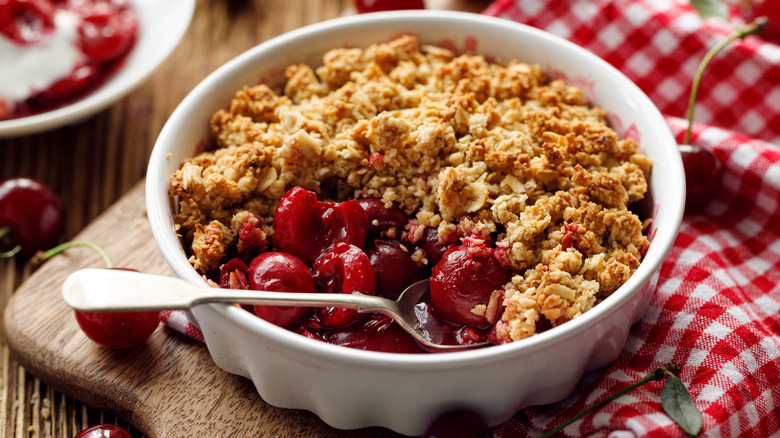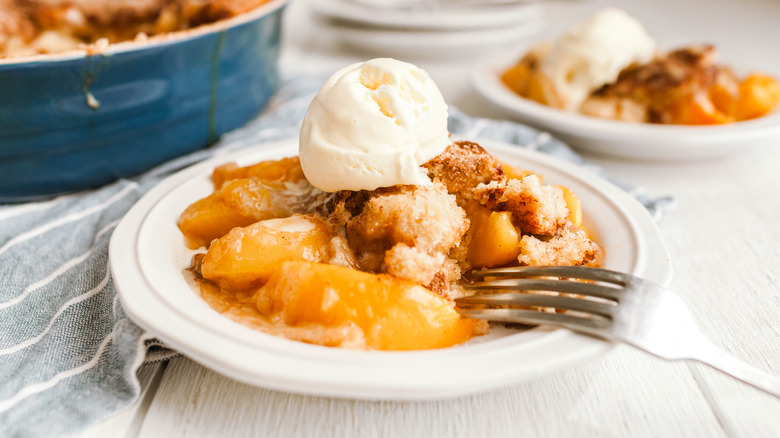What Are The Differences Between Cobblers, Crumbles, And Crisps?
There's nothing quite like seasonal fruit plucked from the vine — and summer brings the juiciest, most delectable bounty of them all. Whether you find yourself with an abundance of blackberries and blueberries, plums and cherries, apricots and peaches, or late-season pears, there are few foods as versatile and forgiving as the sweet members of the May-September produce roster.
The most obvious way to enjoy your haul of summer fruit is to eat it on its own, preferably while lounging in the sun on a picnic blanket and wearing a floppy hat. Otherwise, your sliced stone fruit and berries would be very happy in a salad layered with mozzarella, scattered over a whipped-cream-topped pavlova, or oozing their juices beneath a lattice of sugar-burnished pie dough. One of the most tried-and-true classes of fruit-centric desserts, however, comprises of cobblers, crumbles, and crisps. Each produces a fairly similar result — namely, a baked, crust-topped dessert free from the constraints inflicted on its more technically stringent cousin, the pie — but there are some key differences between them.
Whatever you do, don't call a crisp, crumble, or cobbler a pie
While cobblers, crumbles, and crisps are indeed three different desserts, you'd be forgiven for mixing them up, as each one features saucy, cooked-down fruit and "some type of dough or streusel topping," per Eat This, Not That.
First, you have your cobbler, a longtime American dessert staple that's particularly favored in the South, according to The New York Times' Kim Severson. The dish went through a few variations before reaching its current, most widely accepted form, which is cooked fruit with a biscuit- or cake-batter-like topping. Got it? Let's move on to the crumble, the cobbler's low-maintenance cousin.
Unlike the cobbler, the crumble swaps out a dough-based topping for nuts and oats, according to Martha Stewart. There may be more room for interpretation and spontaneity here, as there's less risk of messing with the texture of a scatter-able topping than experimenting with a cobbler's dough recipe. The Guardian adds that the crumble may have originated in England, also distinguishing it from the cobbler.
Of the three desserts, crumbles and crisps bear the closest resemblance. However, according to Martha Stewart, crisps typically leave out the nuts. As Dorie Greenspan writes in "Baking: From My Home to Yours," a crisp "always has butter and sugar and something to bind the two together, sometimes just flour, but often flour and oatmeal." These are small details, but they make all the difference when discerning between this trifecta of tasty desserts.

